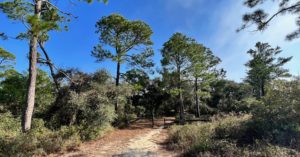Keeping an eye on the ball in AML
 Every once in a while a new approach comes along in acute leukemias, which turns everyone’s head.
Every once in a while a new approach comes along in acute leukemias, which turns everyone’s head.
CAR-T cell therapies certainly achieved this in pediatric ALL, as did the FLT3 and Bcl2 inhibitors in AML before them.
What are the next potential novel developments to think about?
Recently at ASH we explored progress with the Menin inhibitors, although they aren’t the only targeted therapy on the horizon.
In our latest in-depth analysis, we turn our attention to a very different kind of therapeutic intervention, which also happens to have a potential near-term binary event to consider.
This particular review includes an interview with company executives for their perspective on a late stage clinical program…
To continue reading our review on oncology new product development, including expert interviews plus commentary and analysis, BSB subscribers can log-in or you can click to access the content.
This content is restricted to subscribers


 Continuing our series on Kaizen in cell therapy, we now switch both angles and companies to explore a different round early stage developments.
Continuing our series on Kaizen in cell therapy, we now switch both angles and companies to explore a different round early stage developments.


 As we head into the JPM conference next week, it’s a good time to reflect and take stock of where we might be headed during 2023. It’s also an opportunity for a look forward and think about some of the emerging trends and potential hot areas of focus for this year.
As we head into the JPM conference next week, it’s a good time to reflect and take stock of where we might be headed during 2023. It’s also an opportunity for a look forward and think about some of the emerging trends and potential hot areas of focus for this year.


 ESMO IO always seems a good place for finding tricky immunotherapy datasets and this year was no different with Mirati revealing their update adagrasib plus pembrolizumab data from the KRYSTAL 1 and 7 trials.
ESMO IO always seems a good place for finding tricky immunotherapy datasets and this year was no different with Mirati revealing their update adagrasib plus pembrolizumab data from the KRYSTAL 1 and 7 trials.